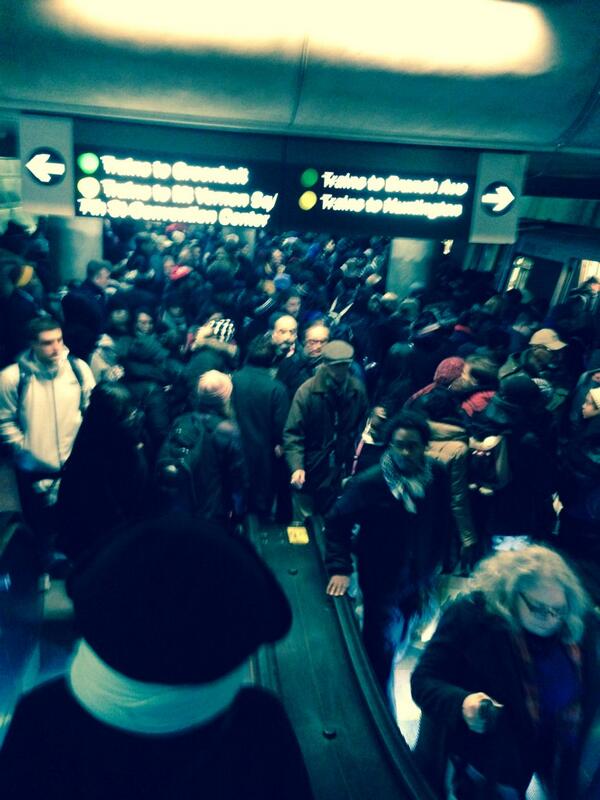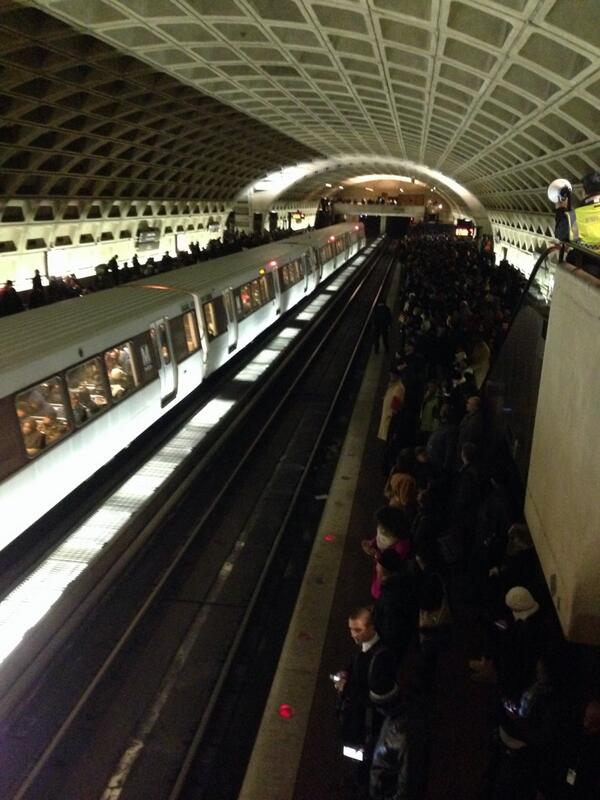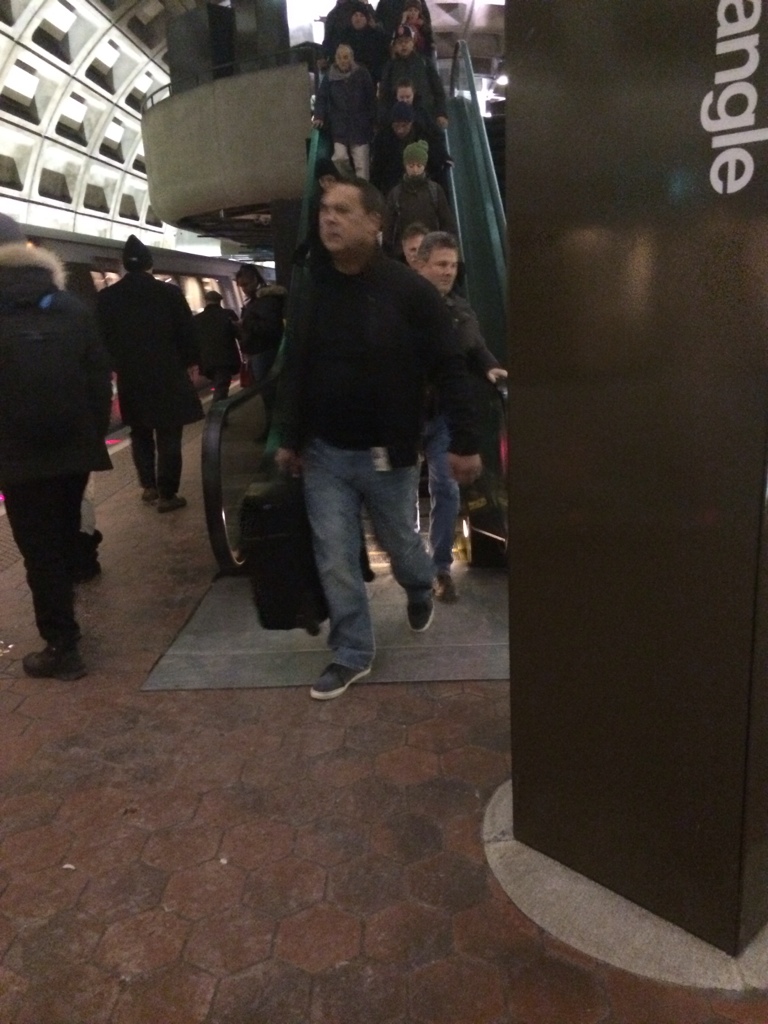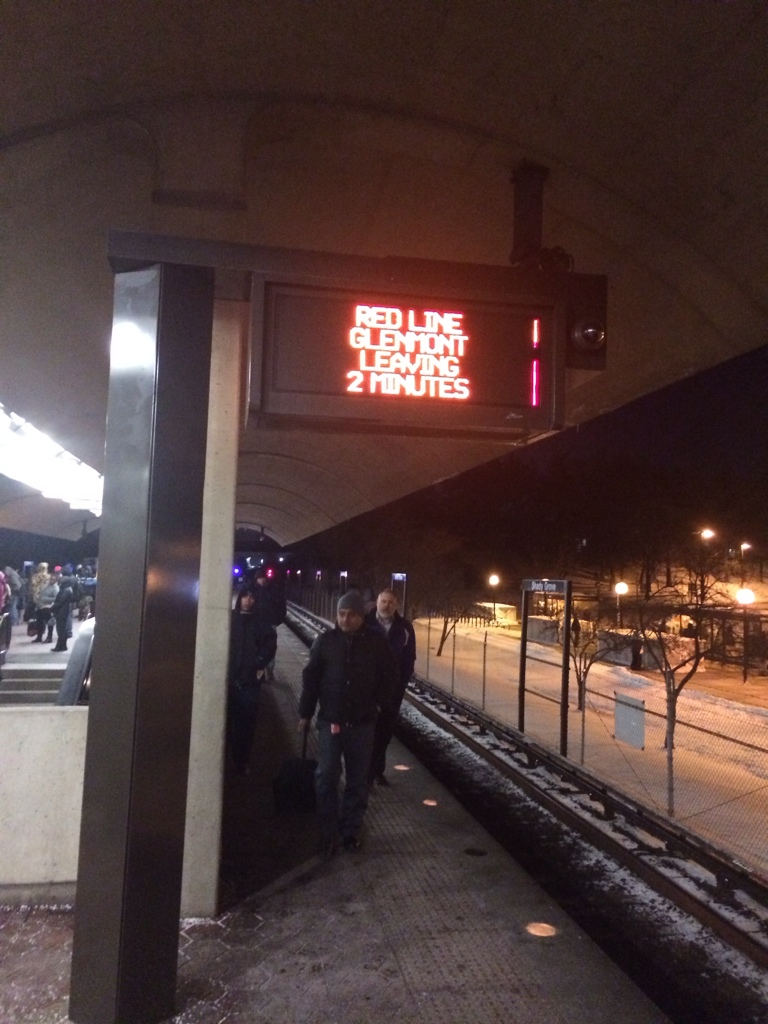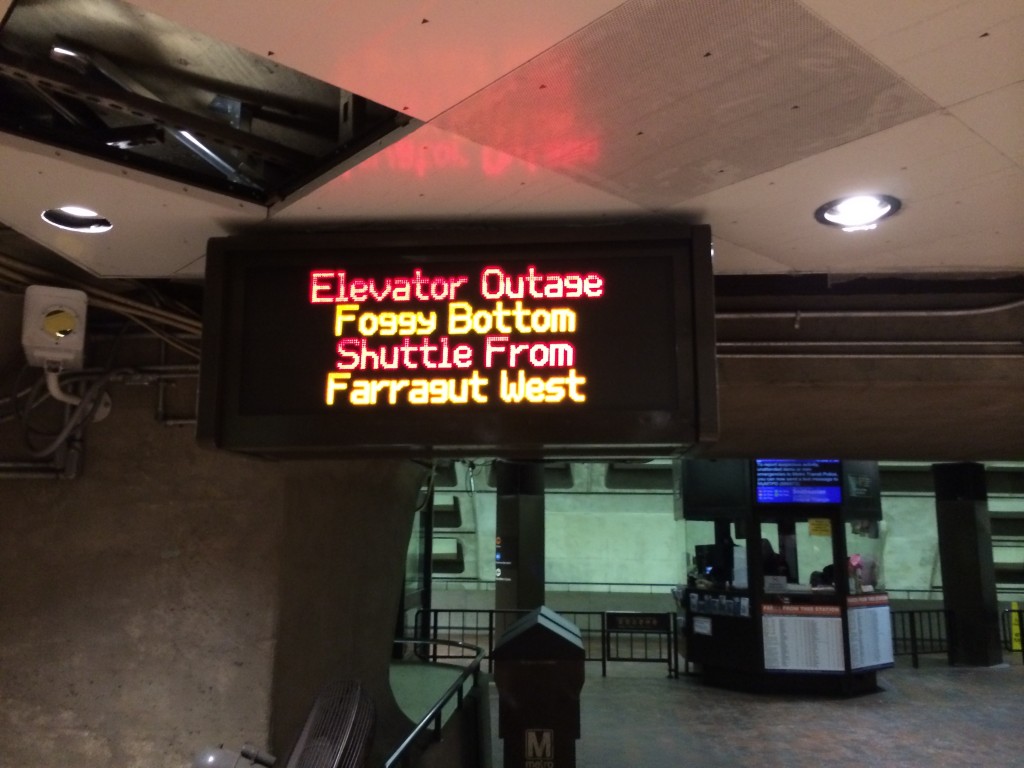
A rider is inspired to join the No Pants Subway Ride last year. (Michael S. Williamson / The Washington Post)
Once again, Metro riders are getting ready to take a brave stance against wearing pants.
Sure, you could opt to keep wearing pants this weekend, cruelly imprisoning your legs in denim, cotton or, if you’re so bold, some type of cotton-nylon blend. Or you could participate in the annual tradition that we write about mostly to let people know why there will be Metro riders without pants on Sunday.
The No Pants Subway Ride is an event started by Improv Everywhere in 2002, even though this seems like the kind of thing that should have existed for as long as public transportation and pants existed. It’s a global event spanning dozens of cities, with subway riders planning to ditch their pants in places from Beijing to Berlin and fromMadrid to Sydney on Sunday.
In D.C., the group is meeting at Hancock Park (near C and 7th streets SW, near the L’Enfant Plaza Metro station and just south of the Mall) at 2 p.m. Sunday, according tothe Facebook page for the event. People are reminded to appear nonchalant about their lack of pants, which makes sense, because it would really be much weirder if everyone on a Metro car was wearing pants.
This page also reminds people to make sure they have their pants on them, perhaps hidden in a bag or backpack, because participants are urged to put on their pants should any authority figure make such a request. As of 4:30 p.m. Thursday, more than 600 people had stated that they were planning to participate (insofar as joining a Facebook event can be considered an official proclamation of intent).
People heading to this event should expect to be a little chilly: the Capital Weather Gang forecast for Sunday calls for temperatures topping out in the upper-40s, with brisk winds. While this is practically spring-like when compared to temperatures earlier this week, it’s still frosty for someone wandering around in their underwear.
And riders should be prepared for waits on every line due to Metro’s ongoing reconstruction work. Trains on the Blue, Orange, Yellow and Green lines will run every 20 minutes, while the Red Line will run more often (with trains every eight to 10 minutes between Shady Grove and Union Station between 9 a.m. and 9 p.m. Saturday and Sunday and every 16 minutes otherwise), according to Metro.


